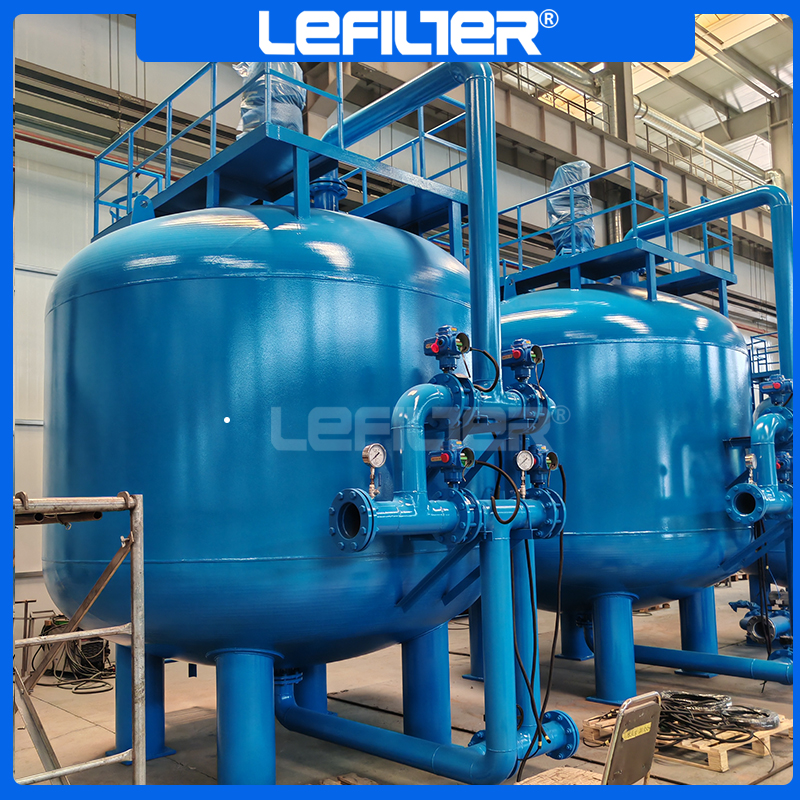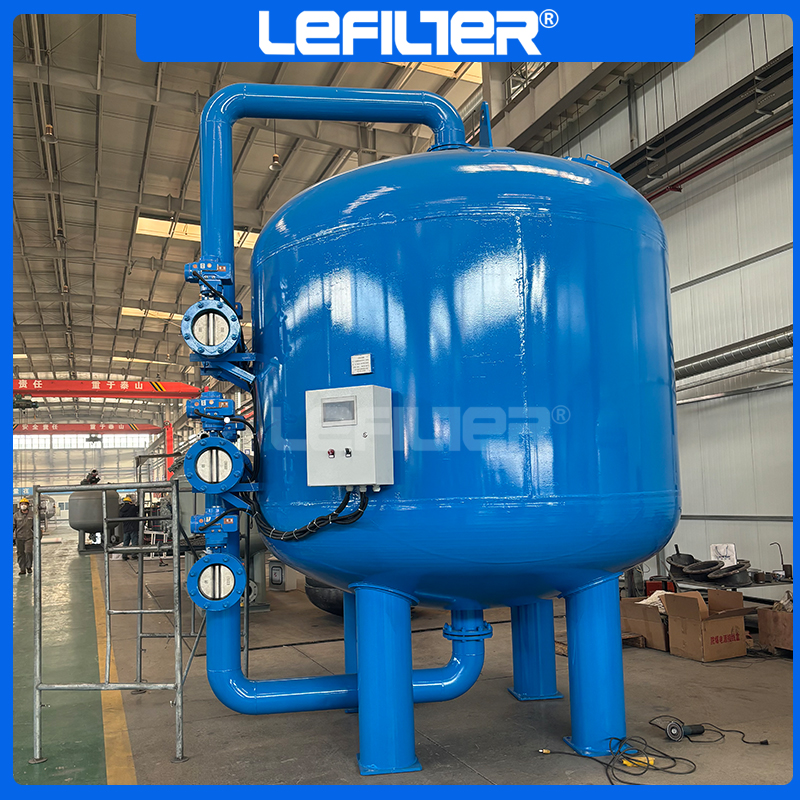Multimedia Filters and Environmental Sustainability
DATE:2024-09-25 Number of views: 1 Source:dongwenhui
As the world faces growing challenges in water scarcity and environmental degradation, the adoption of sustainable water management technologies has become critical. Among these technologies, multimedia filters are playing an increasingly vital role in industrial and municipal water treatment systems. By reducing energy consumption, minimizing chemical use, and enabling water reuse, multimedia filters contribute significantly to environmental sustainability.
The Role of Multimedia Filters in Sustainable Water Management
Multimedia filters, consisting of layered materials like anthracite, sand, and gravel, are used to remove suspended solids, organic matter, and other contaminants from water. Their structure allows them to handle high water flow rates while achieving efficient filtration. This makes them suitable for diverse industries, including power generation, manufacturing, and wastewater treatment plants.
In terms of sustainability, these filters excel by reducing the overall energy footprint of water treatment systems. Traditional methods like chemical coagulation or reverse osmosis require more energy and resources. In contrast, multimedia filtration operates at lower pressures and can be combined with other systems to further optimize water use and energy efficiency.

Reducing Energy Consumption and Carbon Footprint
Energy efficiency is one of the primary environmental benefits of multimedia filters. The filtration process typically requires less energy than membrane technologies such as reverse osmosis or distillation. Multimedia filters rely on gravity and low-pressure systems to move water through various media layers, capturing contaminants without the need for excessive pumping power.
In addition, using multimedia filters as part of a broader water recycling system can further reduce energy demands. When paired with technologies like nanobubble oxygenation or digital twin monitoring, industries can optimize their water use while minimizing their overall energy consumption. These advancements are key to reducing the carbon footprint associated with large-scale water treatment operations.
Enabling Water Reuse and Recycling
Water scarcity is becoming a global issue, particularly in arid regions or industries with high water consumption. Multimedia filters can play a crucial role in water reuse by removing contaminants from greywater and making it suitable for non-potable applications like irrigation or industrial processes.
For example, in water-stressed areas, the reuse of greywater from sinks or washing systems can reduce overall water demand significantly. Multimedia filters are capable of treating greywater to a quality that allows for its safe reuse in irrigation or cleaning processes, thus reducing the need for freshwater withdrawal.
Moreover, multimedia filtration can be integrated into rainwater harvesting systems. Rainwater is captured, filtered, and then stored for future use, especially in agricultural and urban areas. These systems are already being used in several parts of the world to conserve water resources and reduce runoff into urban drainage systems.

Minimizing Chemical Use
Another advantage of multimedia filters is their ability to minimize or even eliminate the need for chemical treatments. In traditional water treatment, chemicals such as chlorine or coagulants are often used to remove contaminants, which can lead to secondary pollution and increase operational costs.
Multimedia filtration, on the other hand, relies on mechanical filtration through various layers of media. By capturing particulate matter, organic compounds, and even some pathogens, these filters reduce the reliance on chemical additives, resulting in cleaner effluent with fewer environmental pollutants.
Sustainable Media Materials
The sustainability of multimedia filtration systems can be further enhanced by using renewable or recyclable media materials. The primary filtration media in multimedia filters, such as sand, anthracite, and garnet, are natural materials that can be sourced sustainably. Additionally, ongoing research into bio-based media, such as activated carbon derived from renewable biomass, could offer even greater environmental benefits in the future.
The use of renewable filtration media reduces the environmental impact associated with mining and processing traditional filter materials. Furthermore, many of these media types can be regenerated or recycled, extending their lifespan and reducing waste.
Applications in Desalination and Microplastic Removal
Multimedia filters are versatile and can be applied to various types of water treatment, including desalination and the removal of microplastics. Desalination plants, which convert seawater into freshwater, often use multimedia filters as a pretreatment step before more energy-intensive processes like reverse osmosis. The filters help remove large particles and contaminants, increasing the efficiency and lifespan of downstream systems.
Additionally, multimedia filters have been found effective in capturing microplastics, a growing environmental concern. These tiny plastic particles, often found in water sources worldwide, can be effectively filtered out due to the fine porosity of the filter media. This contributes to cleaner water systems and helps mitigate the broader environmental impact of plastic pollution.

FAQ
1. How do multimedia filters contribute to water conservation?
Multimedia filters facilitate water conservation by enabling the reuse of treated greywater, thus reducing the demand for freshwater. They also contribute to rainwater harvesting systems, which help in managing water resources more efficiently.
2. What makes multimedia filtration an energy-efficient process?
The filtration process operates at low pressure, reducing the energy required compared to other technologies like reverse osmosis. Gravity and mechanical filtration remove contaminants without excessive power consumption.
3. Can multimedia filters be integrated into water recycling systems?
Yes, multimedia filters are widely used in greywater recycling systems. They treat lightly contaminated water to a level suitable for non-potable applications such as irrigation or cleaning.
4. How does the selection of media impact environmental sustainability?
Sustainable media materials, such as renewable or bio-based options, reduce the environmental footprint of filtration systems. The longevity and recyclability of the media further contribute to sustainability.
5. What are the benefits of using renewable media materials in filters?
Renewable media materials reduce the need for resource-intensive mining and processing. They also offer the potential for regeneration, which extends the lifespan of the filtration system and reduces waste.
6. How does multimedia filtration reduce the need for chemical treatment?
Multimedia filters mechanically remove particulates and contaminants, reducing or eliminating the need for chemical additives such as coagulants or disinfectants in the water treatment process.
7. Are multimedia filters effective in desalination processes?
Yes, multimedia filters are often used as a pretreatment in desalination plants, improving the efficiency of downstream processes like reverse osmosis by removing large particulates and suspended solids.
8. How do multimedia filters handle the removal of microplastics?
The fine porosity of multimedia filters allows them to capture microplastics from water, helping to reduce pollution and clean water systems.
Industry Solutions
Pure Water /Ultra Pure Water System


